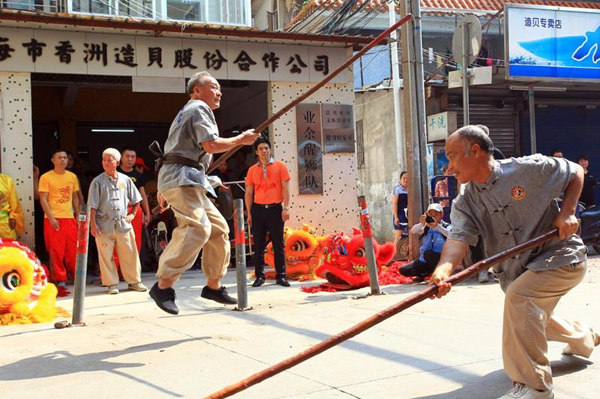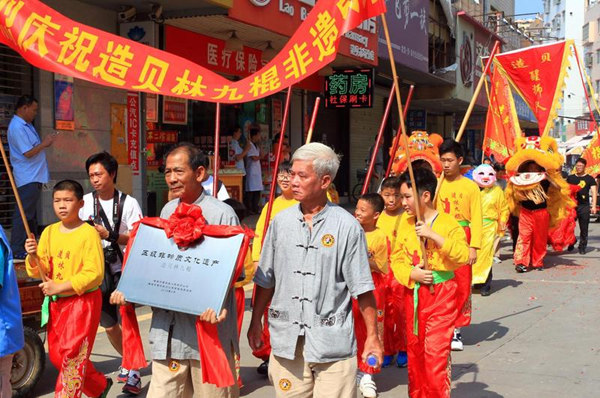Lin Jiu Singlestick (Xiangzhou District intangible cultural heritage)
The Lin Jiu Singlestick martial art, which originated in Zaobei Village of Qianshan, was designated as an intangible cultural heritage item of Xiangzhou District in mid-June 2018.
Singlestick uses a quarterstaff resembling the long pole used for centuries to push fishing boats along Pearl River Delta waterways. It is a 160-year-old practice comprising 36 movements of eight series of skills and tricks.

Masters display Lin Jiu Singlestick
During the reign of Emperor Tao-kuang (Daoguang) (1821-50) in the Qing Dynasty (1644-1911), Zaobei on the Qianshan Waterway was threatened by pirates and invaders. Villagers hired Foshan Kungfu master Lin Jiu to teach them how to protect their homes. Since then, Lin Jiu Singlestick has been passed on for generations as it is practicable, good for health, and visually enjoyable.
The martial art has been well-known throughout Zhuhai’s Qianshan and Nanping and Zhongshan' Sanxiang and Tanzhou areas, according to 67-year-old Master Feng Xizhang, the fifth-generation inheritor of the martial art in Zaobei Village.

Lin Jiu Singlestick masters parade intangible cultural heritage plaque [Photos by Cheng Lin / Zhujiang Evening Post]
Two century-old Lin Jiu singlesticks, 2.5 m long, 4 cm in diameter, and 2.7 kg in weight, are on display at the Zaobei Lin Jiu Singlestick Martial Art Museum. They were used by Master Feng’s Father, the 4th-generation inheritor Feng Youzai, who was once a veteran practitioner of Hung Kuen, also known as Hung Gar or Hong Quan; and Buddha Fist (fut gar kuen) or Buddhist boxing.







